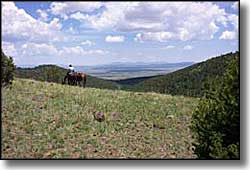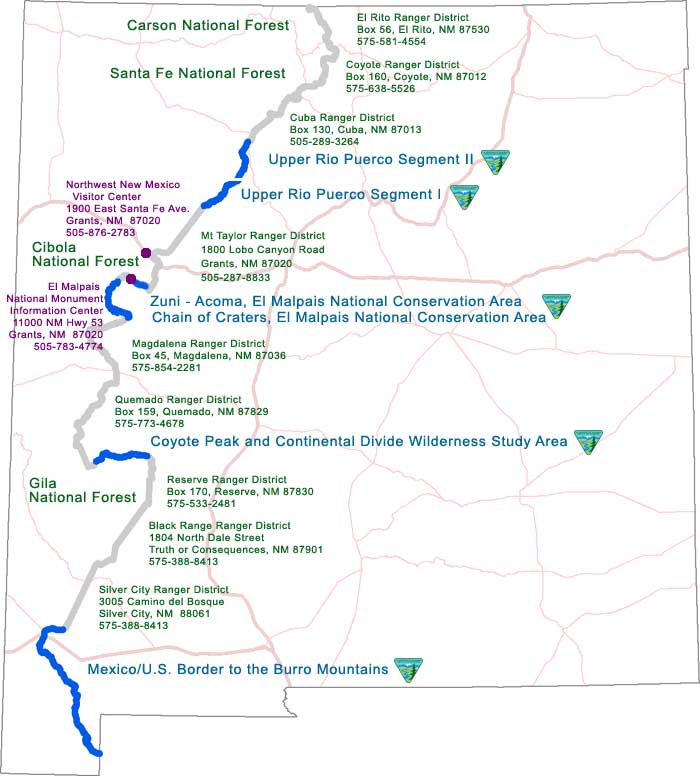
Continental Divide National Scenic Trail

The Continental Divide National Scenic Trail was established by Congress in 1978 with passage of the National Trails System Act. 30 years later, this 3,100 mile trail from Canada to Mexico is still not complete. Sections of it are well established while other sections are not defined as yet. Anyway, most of the trail is hikable and ridable on horseback. Most areas of the trail in New Mexico on roadless BLM land are marked with line-of-sight signs. Otherwise, you are probably following a road and need to be watching for signs. There are easements in places on private lands where you really need to be watching the signage, too.
On the New Mexico part of the Continental Divide National Scenic Trail, drinking water is a big concern. In many places you will pass by stock watering tanks and windmill-driven wells, but the folks who own those facilities are under no obligation to provide you with water. And depending on where you are and where you're planning to go, you may not be able to carry enough water. Don't expect to find any along the way and certainly don't rely on hearsay as to potential water locations: it's your life and many experienced hikers have run dry out here. A good plan is to be twice as prepared as you think you need to be. Don't leave empty containers behind. Go into certain areas ahead of time and leave containers of water stashed for yourself for those days when you'll be hiking back through.
I've gone on a bit about water but general supplies have the same problem. You need to preplan for resupply. This trail stays in remote areas, not near grocery stores or even convenience stores. For that matter, I don't care how good your cell phone is or how good your network is, the thing usually won't work out here.
You need a permit to camp on State land, you need explicit permission to camp on private land. Where possible, the Continental Divide National ScenicTrail stays on federal land where camping is allowed. However, on public land the rules require that you camp at least 300 yards from any water source you do come across. And don't be bathing in any water tanks, the rancher who owns the tank would be well within his rights to shoot you for it (and a body left lying in a meadow near a water source out here would disappear naturally within a couple days).
Save yourself a lot of trouble: when you come to a gate, leave it the way you found it. Don't tamper with any water facilities. Don't leave vehicles at the Mexican border. Look out for rattlesnakes, wolves, bears, undocumented aliens and drug runners (ain't America great for this one?)
Make sure any maps you use are up to date: older maps are possibly incorrect and can lead you into life threatening danger and/or into nasty confrontations with local residents.

Photo Galleries - Unique Features - BLM Sites - Outdoor Sports & Recreation
New Mexico's National Forests - Wilderness Areas - New Mexico's National Parks
National Wildlife Refuges - Ski & Snowboard Areas
